| What's Hot! | Products/ Tools | EFI Tuning | Basic Tuning | Advanced Tuning | Chassis Tuning | Advertise with us |
Automotive Vacuum Systems
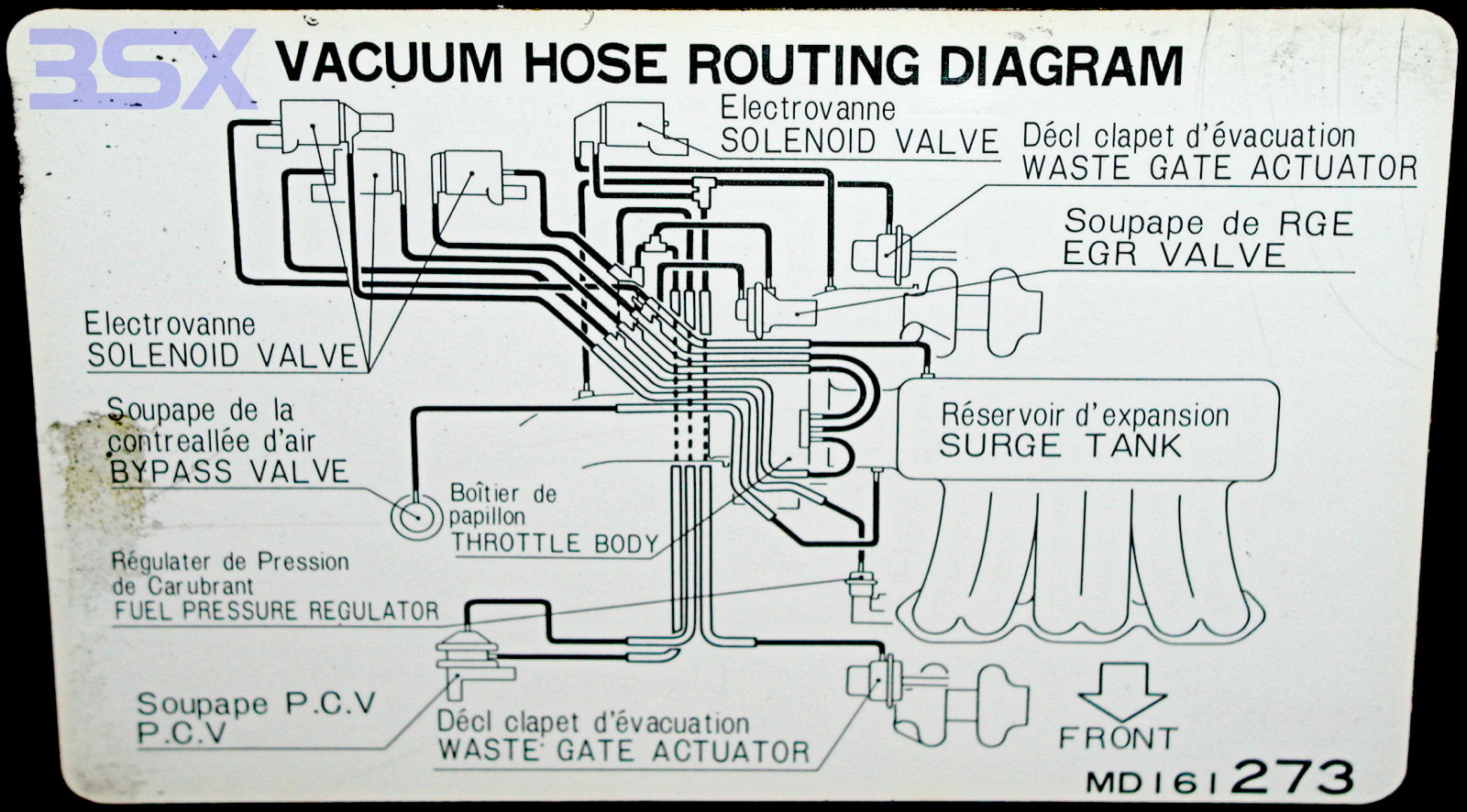
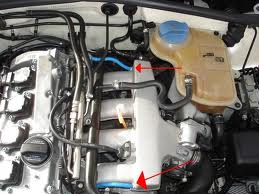
How they work, and how to repair them
Contributed By: Enginebasics.com
Every car on the road since the invention of the combustion motor has used the motors vacuum to perform many functions, but just how does it work?
A motor can be looked at as a giant air pump. The bigger the pump, the more power it makes. Also, the more efficient the pump, the more power it makes. A motor is constantly moving air in and out of itself. The Vacuum that a motor produces comes from the intake stroke of the motor where the crankshaft draws down the piston and air is pulled or “sucked” into the motor. In this situation, if the throttle butterfly is open, not much vacuum is produced since you are freely letting the air flow into the motor. Take that same situation when the throttle plate is closed and the motor will be generating a lot of vacuum as it struggles to suck as hard as it can to pull in air and feed itself passed the closed throttle plate.
One thing important to understand then, is that vacuum will only be present BEHIND that throttle butterfly. In front of the throttle plate there will be no vacuum present due to the fact that it is open to the air box and therefore atmospheric pressure. Also remember that the amount of vacuum a motor will have will be based on how good the piston rings are, and also the cam that the motor is running. Having a good seal from the piston rings most people understand, but when running a very large and aggressive cam, often there will be more overlap in the duration between intake and exhaust valves that will cause a loss of vacuum at idle. This loss of vacuum causes the motor to struggle when idling at low RPM’s.
So why do I have so many vacuum lines coming off the intake manifold?
Well, this is because that is where the vacuum is present. Since the intake manifold represents the area behind the throttle plate, the highest vacuum that the motor produces will be found in the intake manifold. Because of this, the intake manifold will often have many vacuum outlet ports found on it.
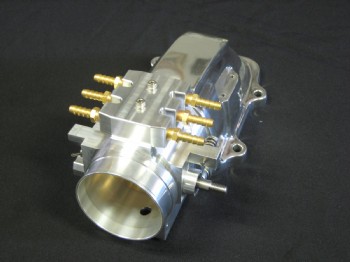
Vacuum Accumulator / Vacuum Box
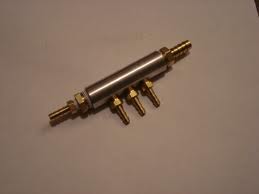
Some custom application intake manifolds or those manifolds equipped with individual throttle bodies, do not have enough room to accumulate sufficient engine vacuum. Also these custom manifolds are installed in such a tight place they don’t have room to have many vacuum ports welded on. The solution is a Vacuum Accumulator, or what are also called Vacuum Boxes. These basically function as remote reservoirs for vacuum to accumulate. There added feature is that they can be mounted anywhere and can therefore be mounted in a space that is free in the engine bay.
Vacuum Controlled Devices on a Vehicle
While almost everything on an automobile used to be vacuum controlled through the use of a diaphragm and actuator, many of these important jobs are being passed on to be electrically controlled now, but every car manufacturer is different.
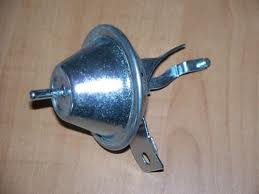
1. Exhaust Gas Re-circulatory Valve ( EGR )
2. Brake Booster
3. Exhaust By-pass Valves ( like those found on Ferrari’s )
4. Pop up Headlights
5. Cruise control
6. Crank Case/ Valve Cover Vent
7. Heating / A/C Vent Controls
Now that is not a complete list as there are many things over the years that vacuum has controlled in the vehicle.
Common Problem / Repairs
The biggest problem with the vacuum system in any motor is LEAKS! With any vacuum system it’s leaks that occur in the system that cause so many headaches to car owners. The nice thing is that to fix this type of problem is very cheap. The bad news is that they can be very difficult to track down. There are a few tools to help find the leaks in your vacuum system though.
1. Vacuum Diagram found in the Factory Service Manual ( FSM )
2. Can of starter fluid
3. Vacuum Pump
4. Your Mouth or another pressure source
Replacing the crap rubber factory vacuum lines with more crap vacuum lines
What you can usually find locally for vacuum line is terrible. The rubber gets old fast and cracks, as well as not keeping a solid conneciton and slipping off. We suggest upgrading from a brittle rubber to silicon vacuum lines:s
Using the Factory Service Manual
When it comes to tracking down leaks, having a diagram of your engine bay will be vital to you saving yourself some time. Every service manual should have a section on the vacuum set-up of your car. Finding this can be tricky, but try checking the index or the emissions section if the index leads you no-where. If you cannot pick up a Haynes Manual or Factory Service Manual, your next best thing is going to be tracing all the vacuum lines yourself and making a diagram.
Can Of Starter Fluid
Using starter fluid is the oldest trick in the book for finding a vacuum leak. With the engine idling, take your can and spray down the vacuum lines and listen for the engine’s idle to change. When you hear the motor come off idle, and rev up slightly, you have got your leak. Obviously this method doesn’t work if your leak is causing your motor idle to really high, or your motor to idle erratically. Also if the leak is VERY small this method will not work, as the amount of starter fluid pulled into the intake will not be enough to affect the idle of the vehicle. This method has worked time and time again as a quick way of finding the leak.
Vacuum pump
My personal favorite if you have the tool. I like to take each individual vacuum line off of the intake manifold and pull it down to 30 mm HG of vacuum and then leave it there for around a minute. If the line holds, then I move on to the next. Not only is this method incredibly accurate, it can find even the smallest of leaks that you didn’t even know you had. Many times I find a leak and fix it, only to find that it didn’t cure my original problem. Meaning the leak was so small that I couldn’t notice it, but I feel that keeping a motors intake tract nice and tight is the best thing for any motor.
YOU HAVE TO GET THIS TOOL!!!! Seriously this tool is borrowed more than any other tool I own. It comes in handy THAT MUCH. Locally it can only be found as the Mighty Vac VACUUM ONLY model. DON'T BUY IT! It's also usually plastic and can break easily. Below is the one you want. Not only is it metal in construction but can do both vacuum and pressure with the turn of a knob. I can't tell you how many things I use it for in the house and garage when I need either pressure or vacuum.....and when I can actually get it back from the friends and neighbors borrowing it:
Also comes with everything needed for brake bleeding.
Your Mouth or Another Pressure Source
With forced induction cars this method could be argued as the best. Since these cars will see both vacuum and pressure in there intake tracts, and manifolds, its best to check all lines for both vacuum and pressure leaks. The reason being that these types of cars are set-up with one way flowing valves ( check valves ) that can often be the problem, but the only way to know is by checking them at both vacuum and pressure. The 3rd gen Mazda RX7 had several one way check valves at various locations in its vacuum/pressure line tract. Also, it is usually with forced inducted cars that you will come across the most problems with vacuum/pressure leaks do to the extra heat a forced inducted application presents, and the extra amount of rubber or silicon hoses that need to be run. All that heat causes many of the hoses to crack over time, and finding those small cracks on the hoses can be tedious work.
While your mouth can provide some pressure to check things, it is best to use a hand pump that can check both vacuum and pressure, or use an air compressor with the proper fittings. (like the one linked to above)
Summary
This is just a small look at the vacuum system of a motor, but hopefully this gives you an idea of how it works, and some ideas on how to track down and repair any problems that may arise because of it.
ATTENTION READER:
If you enjoyed the information and article you just read be sure to check out our newly released book with even more exciting photo's and information:How to Turbocharge and Tune your Engine

Want to know more about your particular Make and Model vehicle? All of these vehicles are covered in the tech, maintenance and repair articles found above. Enginebasics is the wiki or wikipedia of car part, repair, how to and tuning information. Let us be the class 101 for your automotive learning.
| Ford | General Motors GM | Pontiac | Jaguar | Land Rover | Nissan |
| Toyota | Honda | Lexus | Acura | Lotus | Scion |
| Infinity | BMW | Mercedes | Mitsubishi | Ferrari | Maserati |
| Lamborghini | Volks Wagen VW | Saab | Audi | Hyundai | Kia |
| Subaru | Mazda | Chevy | Volvo | Caddilac | Dodge |
| Chrylser | Daewoo | Porsche | Mercury | Freightliner | MG |
Individual Models
| Ford Mustang | Mitsubishi Eclipse | Mitsubishi Evo | Subaru WRX / STI | Dodge Viper | Chevrolet Corvette |
| Nissan Skyline | Honda S2000 | Nissan 350z | Toyota Supra | Chevy Camaro | Lotus Elise Exige |
| Honda Civic | VW Golf | Dodge SRT-4 | Eagle Talon | Acura Integra | BMW M3 |
| Nissan 240sx | Porsche 911 | Acura NSX | Honda Accord | Toyota Camry | Toyota MR2 |
| VW R32 | Dodge Truck | Mazda Rx7 | VW Jetta | Sand Buggy | Nissan Sentra |
For the latest Automotive news and stories visit the websites below |
Our feature Build: An AWD V6 Civic




